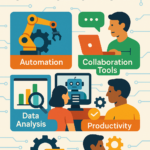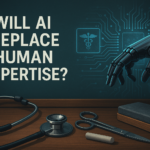The rise of artificial intelligence has revolutionized industries—but it’s also opened a dangerous new front: AI security threats. Sophisticated systems are enhancing productivity and insight, but they’re also exposing critical vulnerabilities. Organizations are rushing to leverage large language models and generative AI, yet too many are leaving the back door wide open.
Recent findings show that AI-related breaches cost companies nearly $4.8 million each and take significantly longer to detect than traditional attacks. As enterprise AI adoption surges, so too does the risk.
The Scale of AI-Driven Incidents
AI security threats are no longer theoretical. The 2025 AI Index Report from Stanford reveals a 56.4% jump in reported AI-related incidents within a year. These 233 cases span data breaches, algorithmic failures, and privacy violations that go well beyond technical glitches.
Flawed algorithmic decisions have caused real-world harm—misdiagnoses in healthcare, biased banking outcomes, and misinformation campaigns that undermine public trust. Innovation is clearly outpacing safeguards.
Even more alarming, 73% of enterprises reported experiencing at least one AI-related breach in the past 12 months. The consequences are no longer hypothetical—they’re already happening.
The AI Security Paradox
This widening gap between adoption and defense is known as the AI Security Paradox. Between 2023 and 2025, enterprise AI use surged by 187%, while AI-specific security spending rose by just 43%.
Many leaders acknowledge the danger. Surveys show 64% are concerned about inaccuracy, 63% about compliance, and 60% about AI cybersecurity flaws. But awareness hasn’t translated into widespread action.
Why the hesitation? Traditional security tools fall short. They often can’t account for threats like model poisoning, adversarial inputs, or hallucinated outputs—behaviors unique to AI systems.
Extended Detection Times and Soaring Costs
AI-powered breaches don’t just happen faster—they linger longer. It takes an average of 290 days to detect and contain one, compared to 207 days for standard breaches. That delay gives attackers time to exploit, pivot, and steal.
And the price tag is steep. Each AI breach costs an average of $4.8 million, thanks to complex investigations, forensic costs, and reputational fallout when flawed outputs hit the public or regulators.
As the global cost of cybercrime approaches $10 trillion, AI’s rapid evolution is quickly becoming a force multiplier for bad actors.
What Are the Most Common AI Threats in 2025?
AI threats come in two major forms: attacks on AI systems, and attacks using AI tools. The most frequent include:
- AI-powered phishing: Attackers use generative AI to craft ultra-personalized phishing emails.
- Adversarial model manipulation: Hackers poison training data or reverse-engineer systems to extract algorithms.
- API vulnerabilities: As companies integrate AI via APIs, these endpoints become top targets.
- Hallucinated outputs: Faulty responses from AI models can be misused in decision-making systems, triggering serious consequences.
A Zero-Trust Mindset for AI
The traditional perimeter-based approach no longer cuts it. Organizations must shift to a zero-trust security posture for AI environments.
Groups like OWASP recommend embedding AI risk management into the development process—from governing model access to red-teaming your AI systems. A recent Check Point AI Security Report emphasizes building validation steps directly into the workflow.
As a Morphisec expert put it on the Meeting of the Minds podcast:
“One of the biggest AI-related concerns is trust and reliability. Security decisions based on flawed AI-generated data can be catastrophic. To ensure safe AI adoption, security teams must implement strict validation mechanisms and adopt a zero-trust approach.”
Smart Machine Digest Resources
For more on enterprise AI risks, safe deployment strategies, and leadership tools, see:
Wrap-Up
- AI security threats are growing fast—and hitting hard.
- Most enterprises have already experienced breaches but lack proper defenses.
- The AI Security Paradox shows spending is lagging far behind adoption.
- New AI-specific threats demand smarter, updated security strategies.
- A zero-trust, validation-first mindset is critical for future protection.
For additional tools that help strengthen your AI stack and protect your workflows, see:





